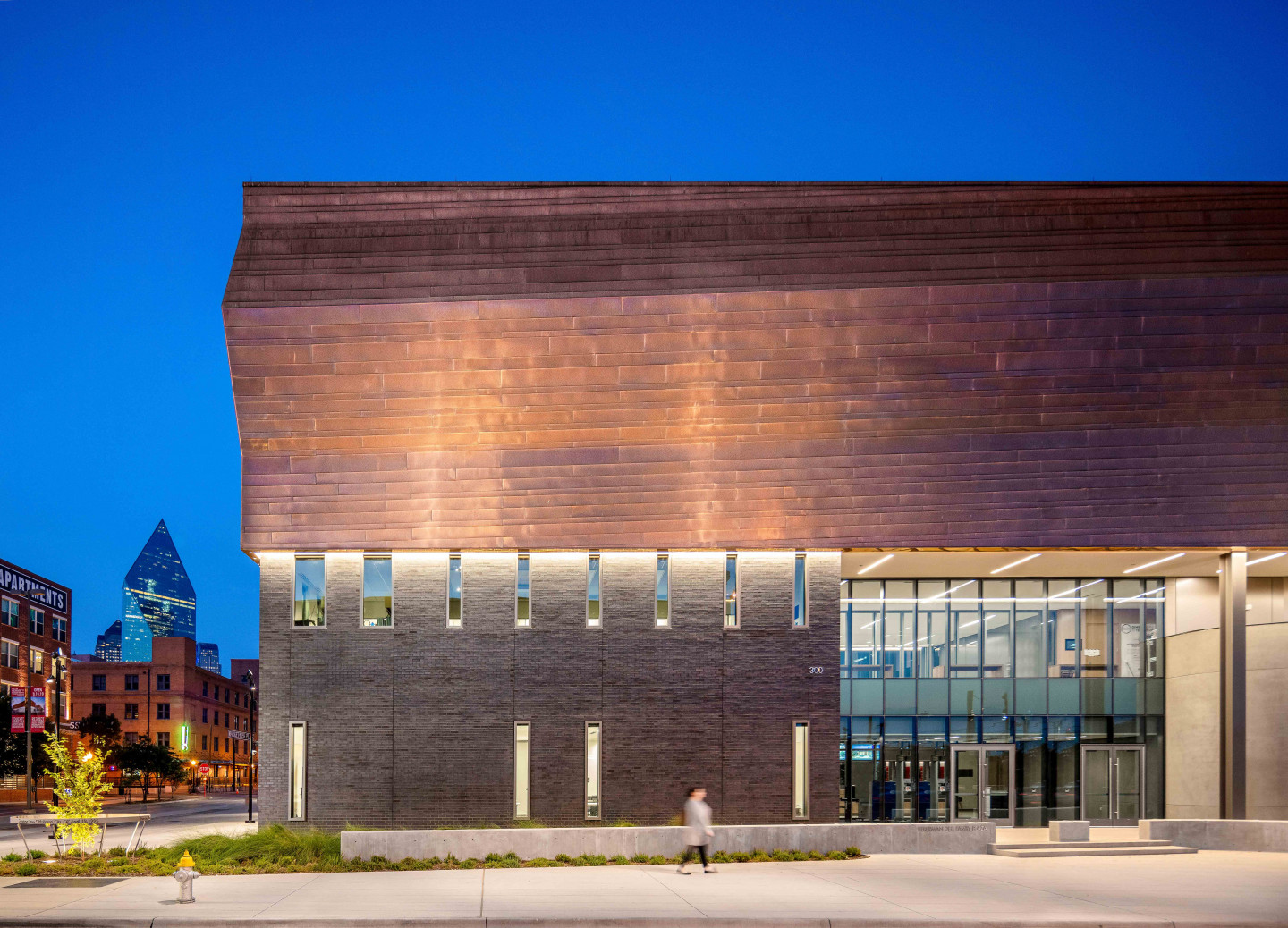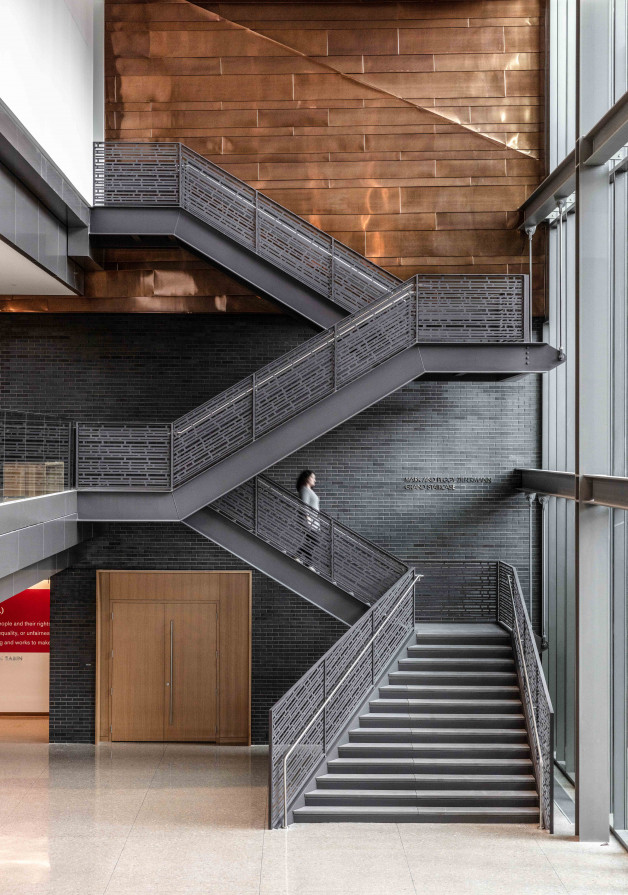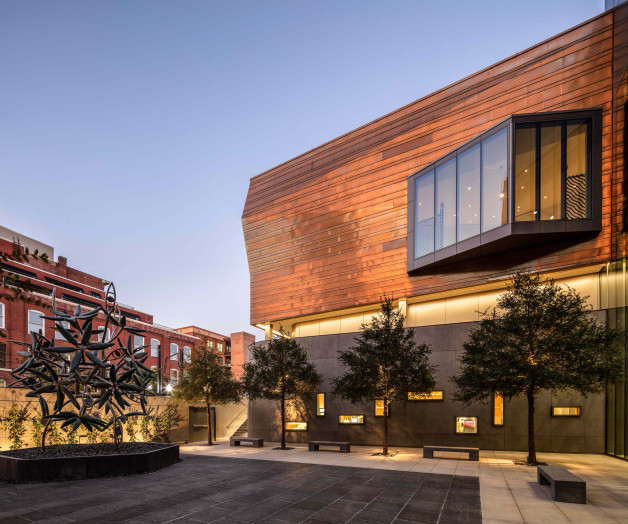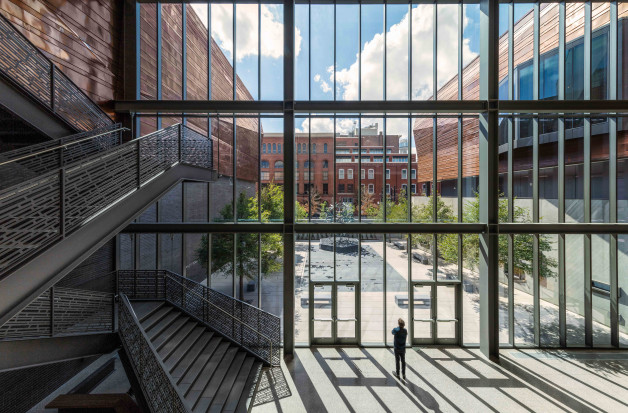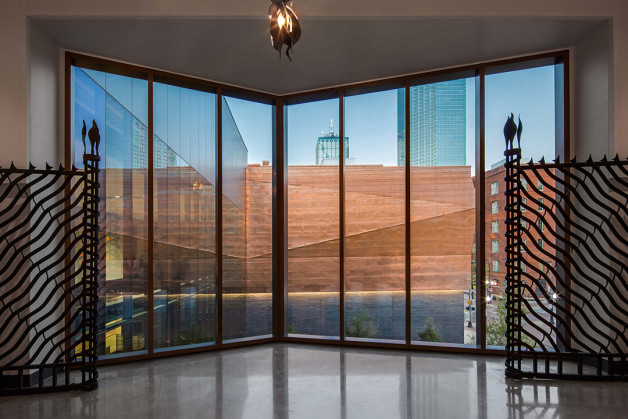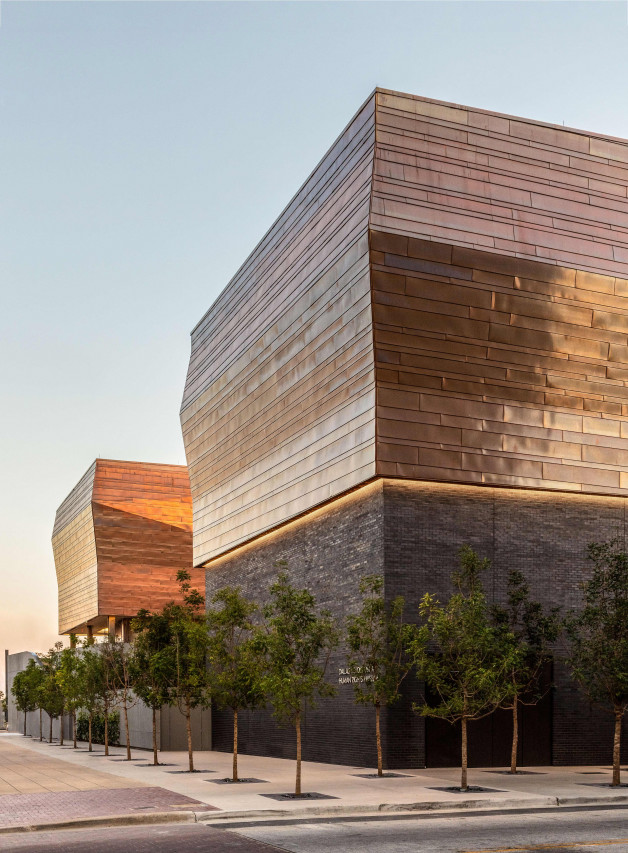Opened in September 2019, The Dallas Holocaust and Human Rights Museum aims to educate the public on the history of the Holocaust, human rights, and the responsibility we have to prevent and stop prejudice and hatred.
The Museum was designed by Omniplan Architects, with visitor experience at the heart of the design process. One of the most striking features of the architecture being a thick band of copper boldly wrapped around the Museum’s central exhibition spaces.
Copper was chosen as the prominent material throughout the building for its amour-like aesthetics and its eventual change in appearance through the process of patination (oxygen creating a greenish-brown film upon the metal’s surface).
Copper is also used extensively throughout the inside of the space. It is a highly recyclable material, making it reusable for future use in product design and architecture.
The interiors within the Museum includes a 250- seat auditorium, used for events (including film screenings), classrooms, a climate-controlled archive and library, a memorial and reflection room.
Omniplan has designed several buildings within Dallas and surrounding regions since being established in 1956, and are known for creating architecture that engages visitors and ensures prosperity for the local communities.
To view more about the Museum, click here.
Photograph credit: Jason O’Rear Photography.
